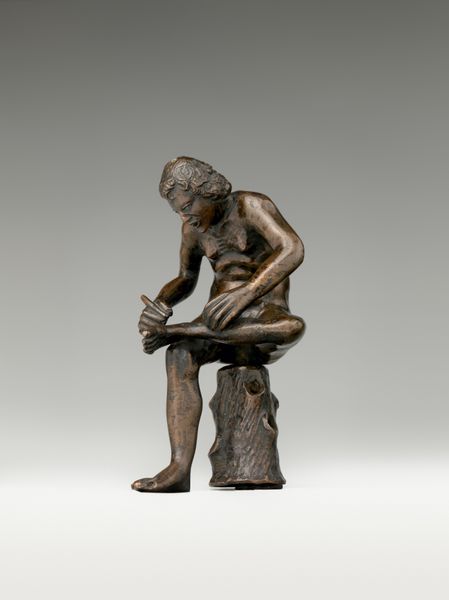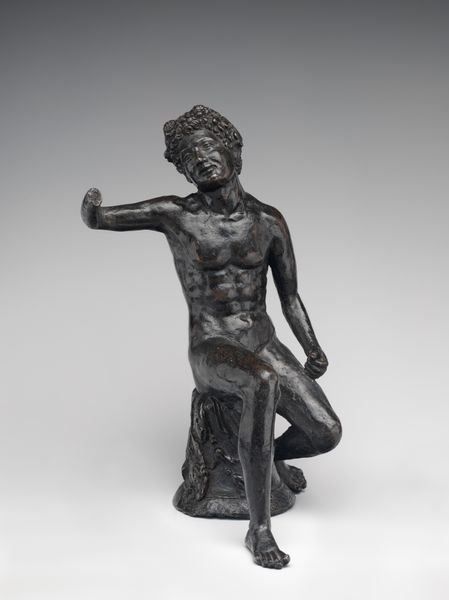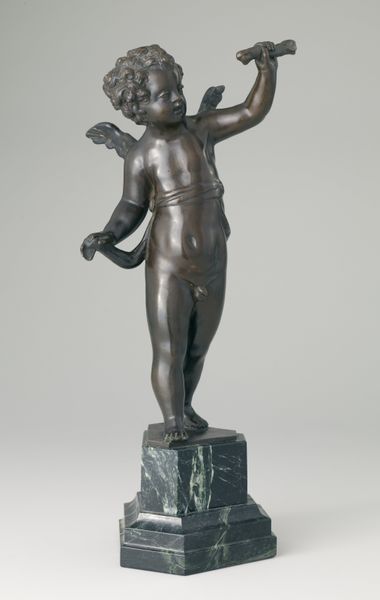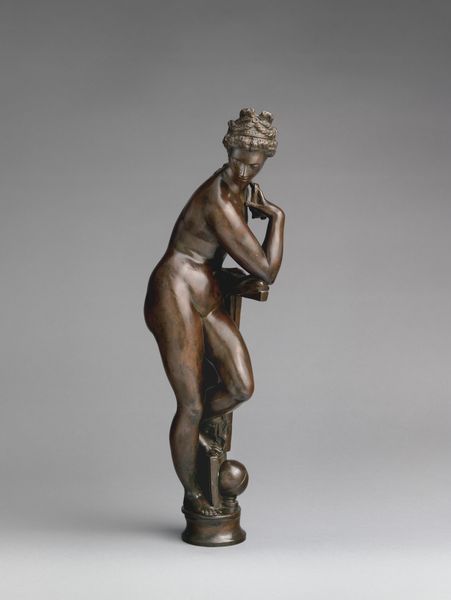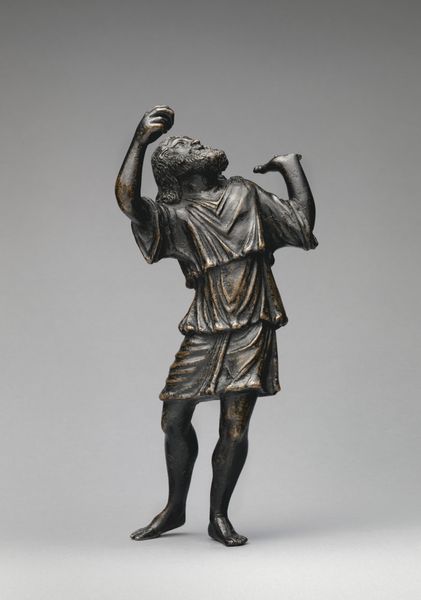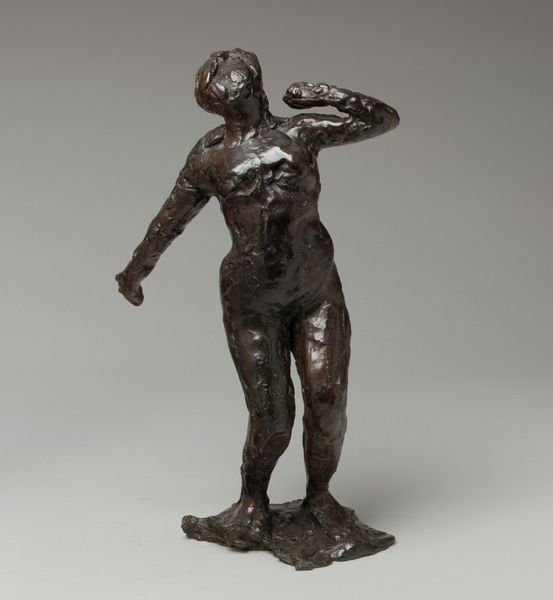
bronze, sculpture
#
bronze
#
figuration
#
sculpture
#
decorative-art
#
italian-renaissance
Dimensions: Overall (confirmed): 7 1/4 × 3 1/2 × 2 3/8 in. (18.4 × 8.9 × 6 cm)
Copyright: Public Domain
Curator: Looking at this small bronze sculpture, titled "Tobias", and attributed to Severo Calzetta da Ravenna, I find myself captivated by the figure’s downcast gaze. There’s a contemplative, almost burdened air about him. Editor: It certainly is a solemn piece. The heft of the sack on his shoulder combined with the polished bronze material creates this sense of groundedness, almost weariness. I'm curious, given Ravenna's time, what do we know about the social status of bronze casters? Curator: That's a crucial question! The creation of bronzes like this wasn't simply an artistic act. Casting bronze required a whole workshop: a hierarchical system involving patrons who commissioned the works, the artists designing them, and then skilled labourers working with the physical material and technical aspects of casting—controlling temperatures, mixing alloys. And works like these cemented social standing, offering luxury goods to the elite. Editor: Right, because the medium isn't neutral, is it? It speaks to specific production processes. What's particularly interesting is the "decorative art" tag; it positions it as ornamental, despite its biblical narrative of Tobias. Did the patron primarily see it as an exquisite craft object intended for display in their private collection, overshadowing the inherent narrative? Curator: Exactly. The scale is important here too, consider its display and intended consumption: bronze statuettes like this would adorn private studies, displayed among other collectibles within these elite circles. The biblical narrative lent a certain virtue or moralising aspect, but ultimately, the fine craftsmanship and costliness of bronze were major elements of its appeal. Editor: And that loop he holds, likely meant for hanging or carrying something else. I imagine the full effect relies on a certain interplay with the space it occupies; the visual connections between "Tobias" and the other prized possessions with whom it shared a room and their associations to power and privilege. Curator: Absolutely. This piece raises questions about production, dissemination, reception and the dialogue between the artist, the patron, and wider culture during the Italian Renaissance. Editor: So it does; thinking through the labour behind the artistry, the networks of production, and how they are implicated in Renaissance society reorients the experience of engaging with "Tobias." Curator: I agree completely; seeing it from a historical angle underscores the power dynamics at play in shaping the artistic landscape. Editor: Well, I suppose both of our perspectives point to one shared idea: to acknowledge all those implicit social and material forces behind artistic creation that influence our view and understanding.
Comments
No comments
Be the first to comment and join the conversation on the ultimate creative platform.
